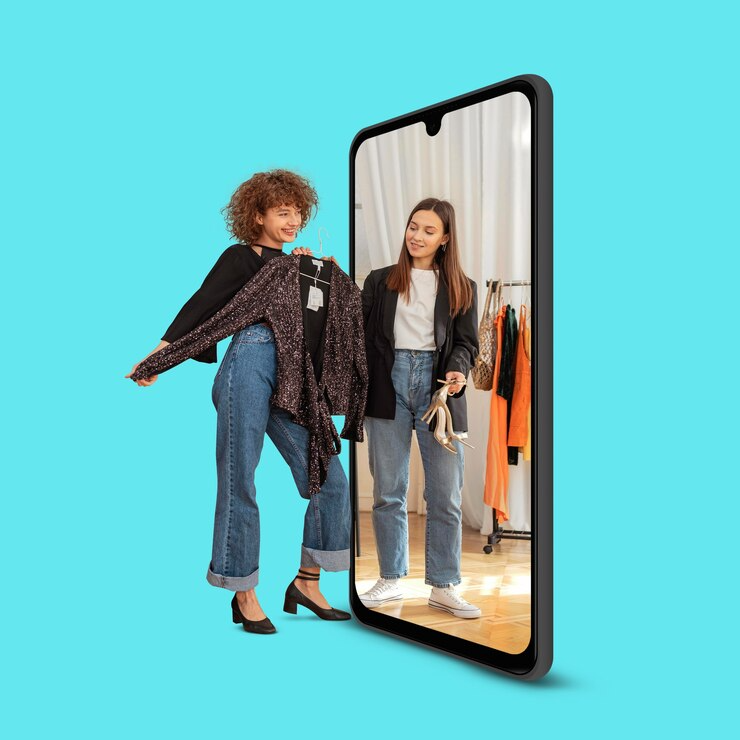Virtual Try-Ons And AR Technology: Transforming Retail Experiences With Immersive Technology
Table of Contents
The landscape of retail has undergone a radical transformation in recent years, with technology playing a pivotal role in reshaping the way consumers shop. One of the most innovative and impactful developments in this realm is the integration of Virtual Try-Ons (VTOs) and Augmented Reality (AR) technology.
Virtual Try-Ons leverage AR to create immersive and interactive experiences, allowing consumers to virtually try on products before making a purchase. This article explores the evolution of Virtual Try-Ons, the role of AR technology, and the profound impact they have on the retail industry.
The Evolution of Virtual Try-Ons
The concept of Virtual Try-Ons has its roots in the early 2000s, primarily in the fashion and beauty industries. As e-commerce gained prominence, retailers faced the challenge of providing customers with an online shopping experience that mirrored the in-store experience.
The initial attempts at Virtual Try-Ons were basic and often lacked the realism needed to gain widespread acceptance. However, advancements in computer vision, machine learning, and AR technologies have fueled the evolution of Virtual Try-Ons into sophisticated and highly realistic experiences.
Today, consumers can virtually try on a wide range of products, including clothing, accessories, eyewear, makeup, and even furniture, from the comfort of their homes.
How Virtual Try-Ons Work
Virtual Try-Ons use computer vision, 3D modeling, and AR for a seamless and realistic user experience. Here’s a brief overview of the typical process:
- Image Capture: Users can either upload a photo or use their device’s camera to capture a live image of themselves.
- Facial Recognition and Mapping: Advanced facial recognition algorithms identify key facial features and create a 3D map of the user’s face. This enables the system to accurately overlay virtual products onto the user’s image.
- Virtual Product Integration: The chosen product, be it clothing, accessories, or makeup, is digitally integrated into the user’s image. This integration takes into account factors like lighting, shadows, and facial movements to enhance realism.
- Real-Time Rendering: The Virtual Try-On system renders the combined image in real-time, allowing users to see themselves with the virtual product from different angles and under various conditions.
- User Interaction: Users can interact with the virtual product, trying different styles, colors, or sizes to find the perfect match. Some advanced systems even allow users to share their virtual try-on experiences on social media or with friends for feedback.
The Role of Augmented Reality (AR) Technology
Augmented Reality is at the core of Virtual Try-Ons, enriching the user experience by seamlessly blending virtual and real-world elements. AR technology enhances the realism of virtual try-ons by accurately overlaying digital content onto the user’s physical environment.
Beyond visuals, integration factors include lighting, shadows, and reflections for a more authentic and immersive experience.
AR technology goes beyond just visual augmentation; it can also provide additional information about the products being tried on. A clothing virtual try-on may include fabric details, care instructions, and color options, enhancing the overall shopping experience.
Benefits for Consumers and Retailers
The adoption of Virtual Try-Ons and AR technology brings forth numerous benefits for both consumers and retailers.
Benefits for Consumers:
- Enhanced Shopping Experience: Virtual Try-Ons bridge the gap between online and in-store shopping, offering consumers a more immersive and enjoyable experience.
- Confidence in Purchases: Users can make more informed decisions by seeing how products look on them before making a purchase, reducing the likelihood of returns.
- Personalization: Virtual Try-On can recommend products based on user preferences and past interactions, providing a personalized and curated shopping experience.
- Convenience: Trying on products virtually eliminates the need to physically visit multiple stores, saving time and effort.
Benefits for Retailers:
- Reduced Returns: Virtual Try-Ons can significantly reduce the number of returns due to mismatched expectations, leading to increased customer satisfaction and cost savings for retailers.
- Increased Conversion Rates: The immersive and engaging nature of Virtual Try-Ons can boost conversion rates as users are more likely to make a purchase when confident about the product.
- Data Insights: Retailers can gather valuable data on customer preferences, popular styles, and trends through user interactions with Virtual Try-Ons, enabling better inventory management and marketing strategies.
- Brand Loyalty: Providing a cutting-edge and user-friendly shopping experience fosters brand loyalty as customers appreciate the convenience and innovation offered by the brand.
Challenges and Future Developments
While Virtual Try-On and AR technology have made significant strides, challenges remain. Refining virtual accuracy, device compatibility, and high-quality image data remains an ongoing focus for improvement.
Additionally, the cost of implementing these technologies can be a barrier for some retailers. Looking ahead, the future of Virtual Try-On holds exciting possibilities. AI and machine learning advancements enhance virtual accuracy, making try-on experiences more realistic.
Integrating Virtual Try-On with VR can elevate the immersive experience, letting users explore product catalogs in a simulated environment.
Conclusion
Virtual Try-Ons, powered by AR technology, represent a paradigm shift in the way consumers engage with online shopping. The marriage of digital and physical worlds through realistic and immersive experiences is revolutionizing the retail industry.
As technology advances, Virtual Try-On will seamlessly integrate into the retail landscape, benefiting both consumers and retailers. In the online shopping era, Virtual Try-Ons are a transformative force, not just a trend, shaping the future of retail.


